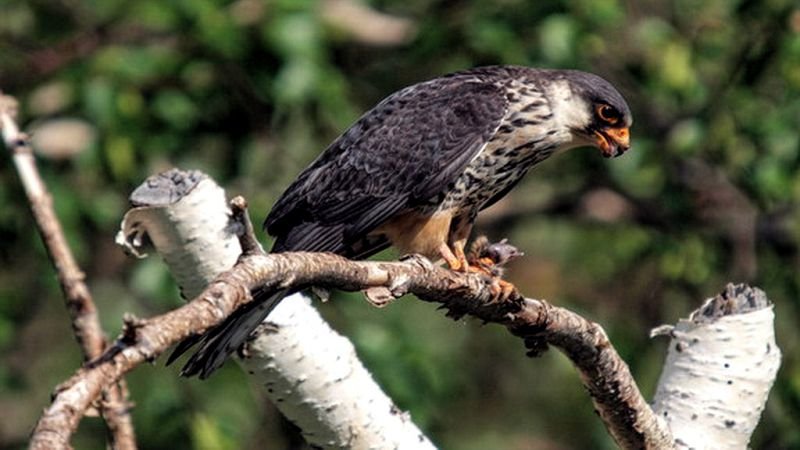Success has been achieved in conserving the Amur Falcon in Nagaland following a ban on the hunting of the bird since 2013. Union Minister of State for Environment, Forest and Climate Change (MoEFCC) Prakash Javadekar and nature conservationists were delighted when two falcons, Naga and Pangti along with a third bird who were tagged with satellite device returned to Doyang lake after making a perilous journey from Mongolia and thence to Nagaland.
Both Naga and Pangti were fitted with satellite tracking chips in the Doyang area about two years ago. Both the birds returned to the state again this year. Both the birds have completed two rounds of migration from Mongolia to Nagaland and then to South Africa.
The Amur Falcons were named Pangti after a village of the same name which took a lead in banning hunting of the highly endangered species. Millions of Amur Falcons make the perilous migration from Mongolia, northern China and southeastern Siberia and gather in Doyang to roost and then move to South Africa where they spend the winter.
Encouraged by the turn of events, Union minister Javdekar announced that the Centre will soon develop Doyang lake as an eco-tourism spot. Javdekar said that Doyang had been recognized as the Amur Falcon capital. In 30 minutes, more than a million birds can be seen in Pangti village and is an exciting scene indeed.
Javdekar further added that the conservation of Amur Falcon has been possible only with the participation of the public. It is community conservation in all its glory, and this must be applauded. People who once hunted these birds have taken up the mantle of protecting these birds.
The minister added that four or five Amur Falcons will be tagged with satellite chips again. The birds will be named as per their roosting sites and then set free. The satellites will help the bird conservationists to keep track of the birds.


















